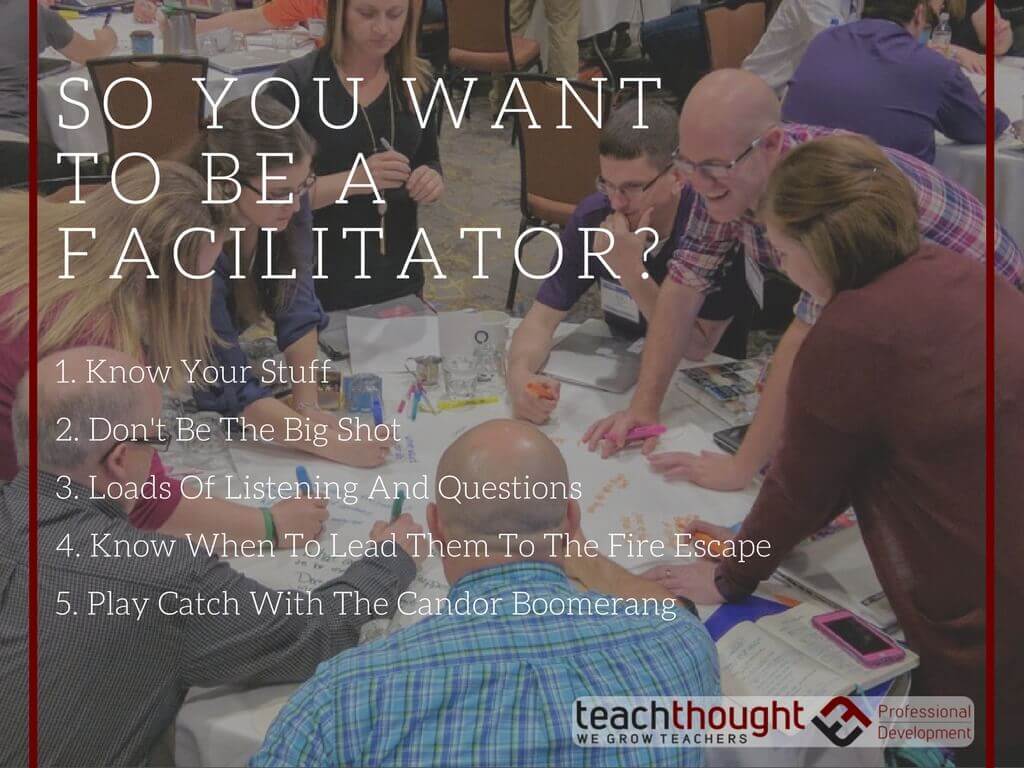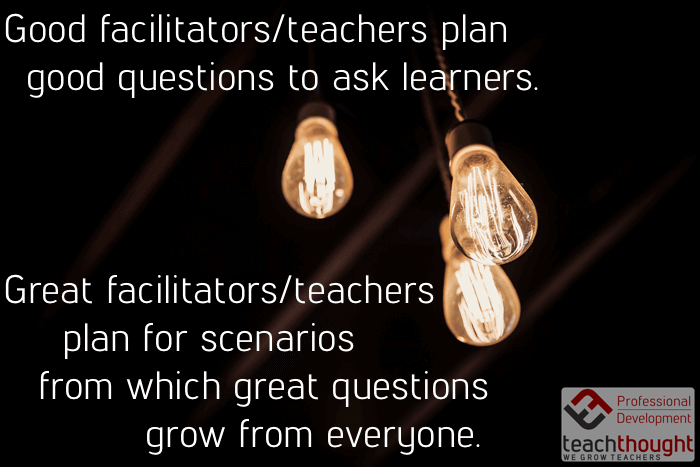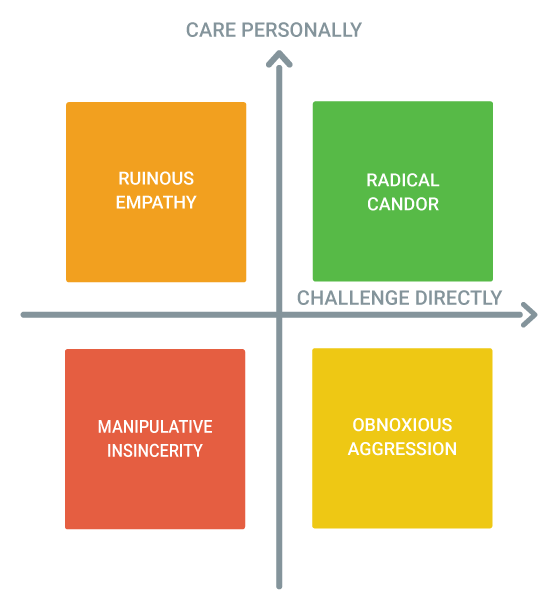How To Be A Better Facilitator
contributed by Drew Perkins
So you want to be a facilitator?
A few weeks ago, as I was wrapping up an inquiry workshop with a really fun and great group of Agricultural Science Educators, I was approached by a young man who said he would soon be making the transition from a classroom teacher to a new position where he would be working with adults.
He asked me for advice and tips about being an effective facilitator. Aside from the question being a nice compliment (or at least I’m taking it as such) it also leaves me with hope that my advice might help many others as a true facilitator empowers others to build capacity in themselves and others.
So, what makes for a quality facilitator of professional development? It’s complex, but here are a few tips. You might notice how the significant overlap between good teaching and ‘good facilitating.’

Want To Help Teachers Grow? 5 Tips To Be A Better Facilitator
1. Know Your Stuff
You don’t have to have all the answers, and actually, it’s important to recognize and even be transparent that you don’t. When I was teaching AP Psychology I usually communicated to my classes very early on that I didn’t have everything in the book memorized. Your job as a facilitator is not to be the giver of all knowledge and understanding.
You do need to understand your content well enough, though to be able to design your work with learners to allow your teaching craftsmanship to show. Can you be fluent in asking questions, pushing, and prodding in the right ways that allow for a productive struggle where learners don’t shut down but keep moving forward? This is very difficult to do when you’re moving through the content for the first time or haven’t had much experience with it.
It’s kind of like athletes who have been there before, the game starts to slow down.
2. Don’t Be The Big Shot
One temptation of leading learners (adult or youth), when you’re passionate about the content, is being the one to verbalize all the cool stuff. There’s a certain “big shot” factor that arises when you get to show how much you know. Sometimes people think you’re really smart because you’re saying such profound things.
But the smartest people in the room aren’t the ones with all the answers, rather they’re the ones building capacity in others. Approaching learning from the perspective of how you might help others come to those profound thoughts through inquiry is the real gold. It’s these a-ha moments that can truly propel learners to move forward with vigor instead of stagnating.
While the short-term value of “showing off” your expertise is appealing, you really want learners to walk away having traveled the full cognitive terrain of their journey, not just being transported there with your words.

3. Loads Of Listening And Questions
To bring out the best in others, we need to listen for it.
Sometimes that’s tough because you’re on a schedule, or perhaps what they say doesn’t fit your agenda. But how will you understand your learner’s needs if you haven’t asked and paid attention to their responses? In a learning scenario where everyone is compliant, I suppose this doesn’t matter, but we’re after commitment, right?
Understanding what your learners think and feel is vital so you can be responsive. Asking clarifying questions and paraphrasing their responses to be sure you’re (and they are) clear on their thinking helps make the direction forward more purposeful. Using beautiful questions to help learners then process and come to conclusions can empower them to direct their own learning in the future.
Setting the scene where beautiful questions are growing from your learners is zen-like.
4. Know When To Lead Them To The Fire Escape
A former colleague of mine once shared a story as we discussed the concept of leading through inquiry. Most of the time, leading learning through questions is a great strategy, but if there’s a fire, you don’t help people find the fire escape is by asking questions.
As my colleague said, “You tell them where the damn fire escape is and quickly!” There are absolutely times when it makes sense to expedite learning with what might be called direct instruction. Perhaps the learning is not part of your (assessed?) content or it’s tangential but necessary to understand the core of what you’re after.
Or maybe you just don’t have as much time as you’d like; we’ve all been there before right? Providing the necessary knowledge, understanding, and even wisdom can help lubricate the process. While it may seem contrary to my advice about bringing out the best in others in tip #2, it is important to establish your expertise and credibility.
5. Play Catch With The Candor Boomerang
A large part of quality facilitation is the setting of norms and culture. In pursuit of this it’s important to establish the norms of transparency and even radical candor. While it is important to understand what other are thinking and feeling too much empathy can be ruinous.
Challenging thinking while not being obnoxiously aggressive takes skill and can be aided by the willingness to accept similar feedback. If everyone is just dancing around the realities and patting one another on the back the real change and growth isn’t likely to happen.
When the candor is valued and treated as a two-way street the candor boomerang becomes a powerful dynamic.

Presenting or Facilitating?
Some PD partners discourage this in their “consultants, but we know this is what makes our time with you more valuable. Would you rather sit through another “PD presentation” or have a facilitator who helps coach you to to think and experience real growth?
I’ve worked with a few folks on facilitation skills who quoted their experience in multiple “presentations” as an asset and sometimes that’s a red flag. There is a difference and sometimes PD providers don’t get it. It’s a sometimes subtle shift from pushing to pulling and directing to leading. The same idea applies to teaching in a k-12 setting; it’s just a different level of sophistication.
As I talked with the young man I referenced earlier, he noted that facilitating and great teaching were actually not much different at all.
I’m glad I could help him reach that conclusion.
